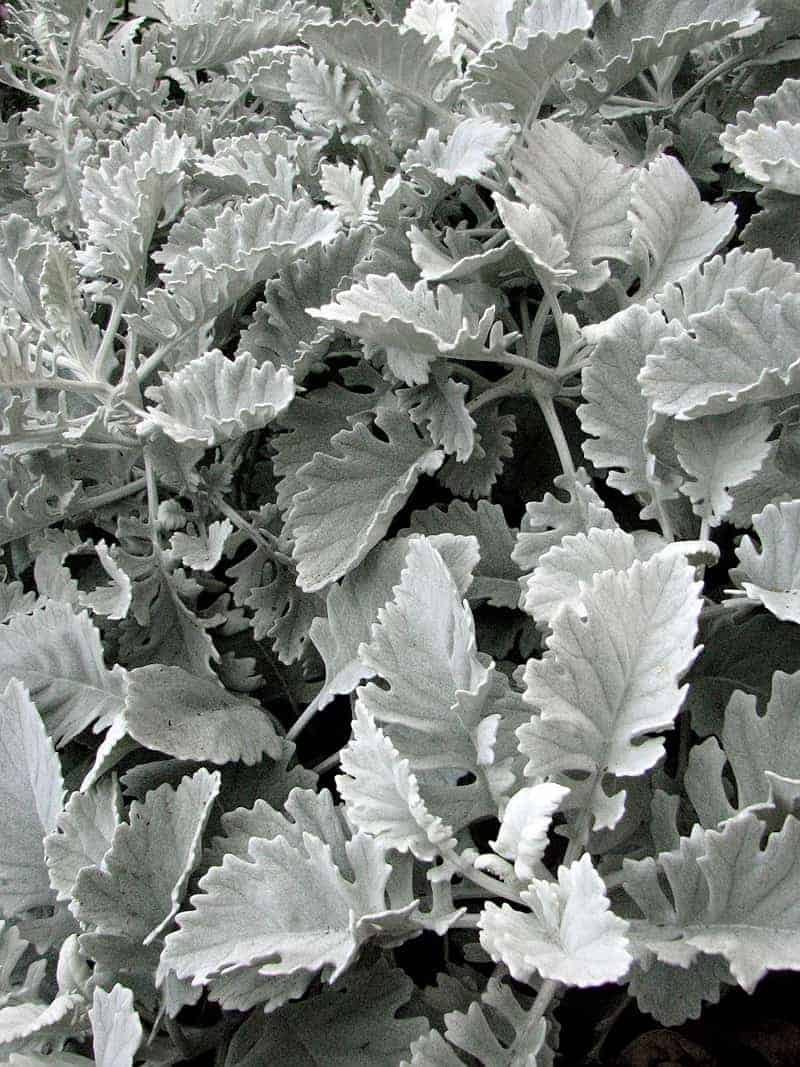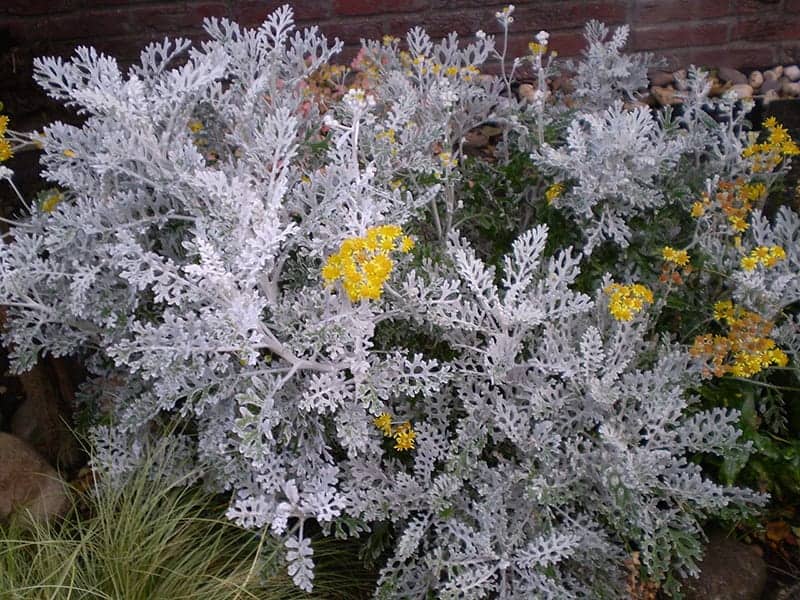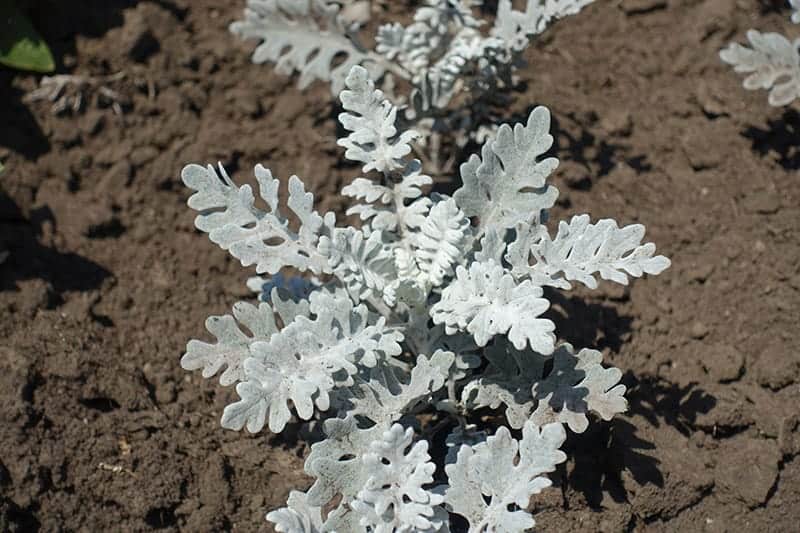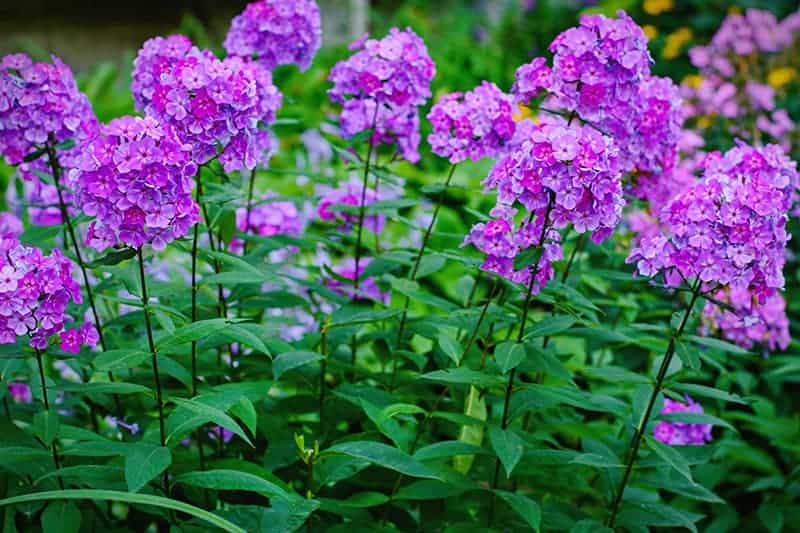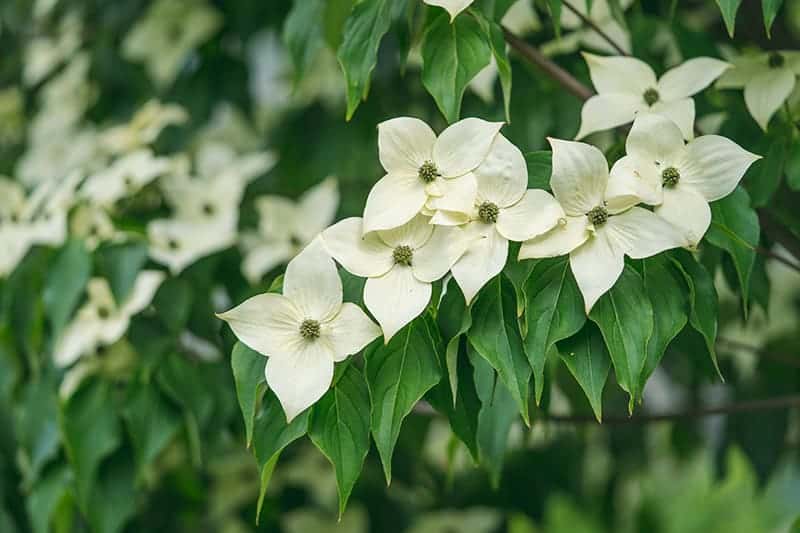- Home >
- Dusty Miller – Our Best Tips to Caring For Jacobaea maritima
Dusty Miller – Our Best Tips to Caring For Jacobaea maritima
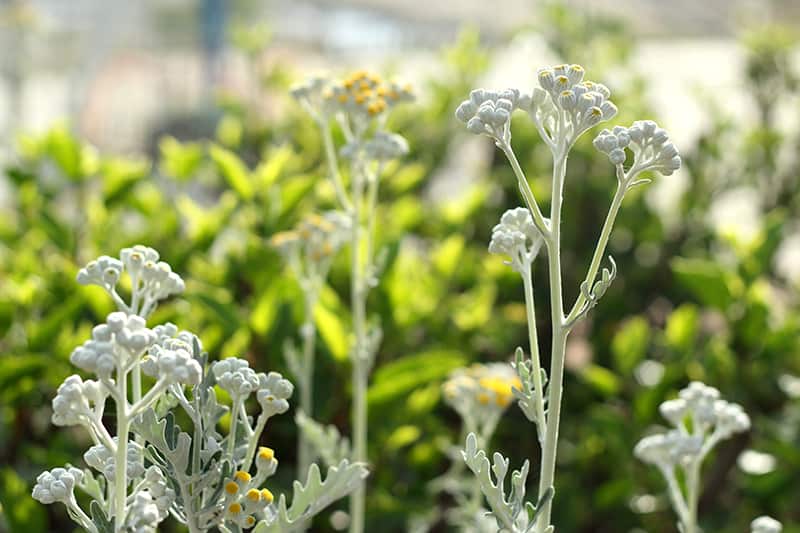
The dusty miller plant is scientifically known as the Jacobaea maritima, though it was previously identified under the name of Senecio cineraria, and some places still incorrectly label the dusty miller with this name.
If you find yourself with a Jacobaea maritima or a Senecio cineraria, you might be confused about their care, but it’s important to realize that these plants are exactly the same. The dusty miller offers unusual silver-colored foliage with a soft felt-like texture. It forms in mounds and requires very little maintenance, so it is a wonderful addition to easy care gardens. The striking leaves provide a good contrast for other flowering plants; the dusty miller does flower itself, but these blooms are considered insignificant in comparison to its beautiful lacy foliage.
Dusty Miller Overview
Quick Facts
| Origin | North Africa, southern Europe, and western Asia |
| Scientific Name | Jacobaea maritima (formerly Senecio cineraria) |
| Family | Asteraceae |
| Type | Evergreen perennial plant |
| Common Names | Dusty miller, Silver ragwort |
| Height | Up to 3 feet |
| Toxicity | Toxic to pets and animals |
| Light | Full sun to partial shade |
| Watering | Low watering needs |
Varieties
There are multiple plants going by the common name of ‘dusty miller,’ and in fact, many plants that have silver-colored foliage have earned this name. The true dusty miller is the Jacobaea maritima (formerly Senecio cineraria), and within this species of the plant there are numerous varieties you can choose from. Several varieties of dusty miller plants have been cultivated by breeders, and these include the following.
‘Cirrus’
This variety of dusty miller plant has a less delicate look than many of its relatives, with less serration on the edge of the foliage, making for a bolder and more defined look. The silver-white foliage of this variety has the soft felt texture associated with dusty miller plants, making it an ideal companion plant for contrasting flowers and foliage.
This variety of dusty miller is lower growing than many other, reaching heights of only up to 1 foot tall. It spreads easily, making it especially useful for ground cover, filling out gaps in flower beds and borders. It also works well in containers and hanging baskets, bringing shocks of unusual foliage color to different areas of the garden. The ‘Cirrus’ variety has an expected lifespan of around ten years if given the proper care.
‘Silver lace’
This is a dainty looking variety of dusty miller, probably appearing as the most elegant of all the dusty miller varieties. It has delicate toothed leaves that are similar to ferns, and give a pretty lacy look. This plant grows to around 8 inches in height, making it suitable for container growing as well as in borders and beds. It not only forms a compact size but also a compact shape, naturally growing into a spherical shape. This plant is deer resistant and enjoys dry soil. It appreciates regular fertilization with a good amount of nitrogen to aid in lush foliar growth.
‘Silver dust’
The silvery foliage of this variety is delicately cut to give an elegant appeal. It has thick stems that grow to around 18 inches in height, reaching maturity at just four months old. This is an incredibly fast-growing plant that responds well to pruning. Cut back the height of the plant to encourage more growth lower down, as this will result in a lush, bushy plant. This plant is cold hardy and can survive well in low temperatures. It is drought-tolerant and works well when planted with other plants that have low water needs. This plant works particularly well in cut flower bouquets, filling out floral displays with unusual foliage.
‘Silver filigree’ / ‘Silver cascade’
This award-winning plant has a compact growth habit, reaching heights of between 4 and 8 inches but spreading up to 14 inches wide. It makes the good ground cover but is most commonly used in containers and borders. The silver foliage of the plant is deeply toothed, with a soft wooly texture.
‘Ramparts’
Dusty miller plants are generally low-maintenance and easy-care plants, but this variety is the most easy-care of them all. As long as it is planted in a full sun position and is treated to occasional watering, then it should thrive without any extra attention.
Caring for Your Dusty Miller
Watering
Once the dusty miller plant is well established, it will be tolerant of drought and only need occasional watering. However, young plants should be kept in lightly moist soil to allow them to grow strong. This plant is averse to sitting in wet soil, and so a well-draining soil is essential to prevent root rot.
Amend poorly draining soils before planting your dusty miller by adding sand or grit. A well-draining soil will direct water away from the plant’s roots, offering protection in the event of heavy rain or overwatering. A mature dusty miller plant can survive extended periods without water. However, it is a good idea to offer weekly irrigation throughout summer to keep the plant in the best health.
Light
Dusty miller plants thrive in full sun, though they will tolerate partial shade. If you want the most vibrant silver foliage color, you should ensure your dusty miller plant gets at least 8 hours of sun each day. This plant will survive in low light, but it will be at the cost of the intense silver leaf color.
Dusty miller plants grown in the shade also have a tendency to become leggy, as the stems branch out in search of sunlight. A full-sun position will help the plant to maintain a more attractive compact form. If you must position the plant in partial shade, make sure the shaded time is during the afternoon. This will offer the plant some relief from high temperatures during the hottest time of the day, though generally speaking, the plant tolerates heat well.
Temperature
Dusty miller plants thrive in a wide range of temperatures, from 40 to 80 °F. The plant is hardy in USDA zones 7 through 10, though it can be grown in cooler zones than this as an annual rather than a perennial. The plant tolerates heat well, but in hot climates, it would benefit from afternoon shade where the temperature will be a few degrees lower (Missouri Botanical Garden).
Propagation
Dusty millers can be grown from seed or from stem cuttings. To grow from seed, you can sow seeds directly outdoors once the final frost has passed, or sow them inside on a seed tray anywhere between 10 and 15 weeks before the last frost is predicted. To do this, sprinkle the seeds across a moist growing medium and maintain an even temperature of between 65 and 75 °F.
The dusty miller seeds require light in order to germinate, so don’t cover them over with soil and keep them in a bright spot. Germination typically takes between 10 and 15 days. Grow your seedlings inside by maintaining moist soil and transplanting them to larger containers when they are an inch or two in height.
Once the last frost has passed, you can transplant your seedlings outside. They work well as bedding plants in borders and flower beds.
Sowing seeds outside is exactly the same, though the weather must be warm to achieve germination. Thin the seedlings out so that around 18 inches of space separates each one, allowing adequate growing room for the plants to thrive.
Stem cuttings should be taken from the plant in summer if you wish to use this method of propagation. Softwood stems are needed for this, which should have all lower leaves removed before being placed in a moist growing medium and kept in a bright spot. You may also want to cover the cuttings over with a clear plastic bag to create greenhouse conditions to help the stem root.
Once roots have formed, you will notice new leafy growth above the soil. At this point, remove the plastic bag and wait a few more weeks before transplanting the new plant outside.
Pruning
If your dusty miller gets leggy, then you should prune it to encourage more bushy growth. Cut it down to around half its height, and it will respond with more growth lower down, which will help the plant to fill out and become denser and lusher looking.
If you are happy with the size and shape of your dusty miller, then you may never need to prune back its stems at all. The flowers, however, are a different story. If your dusty miller blooms, it is advisable to cut off the flowers right away. The mustard-colored flowers are not visually appealing, and they take a lot of the plant’s energy. Cutting them off will ensure the plant uses its energy to continue producing attractive foliage, rather than being wasted on uninteresting flowers.
It’s rare to see these flowers growing in gardens, and most people will remove them as soon as they appear (University of Illinois Extension).
If you have any questions about dusty miller, leave a comment below, and don’t forget to share this page with other plant lovers!

